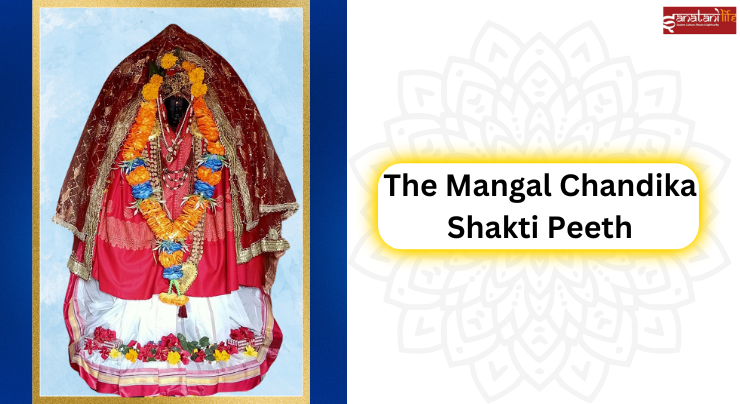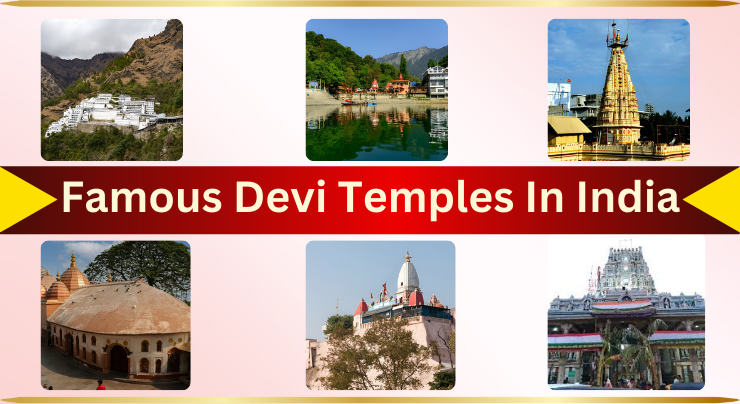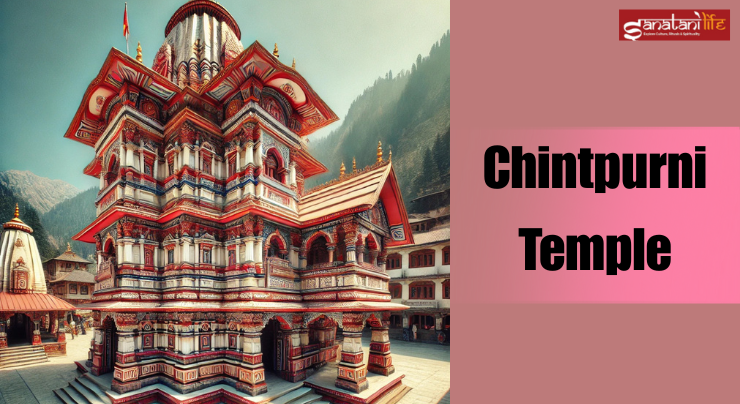Vrindavan: The Sacred Land of Radha-Krishna
Picture entering a realm where rustling leaves tell stories of divine love, and the air is filled with the tunes of ancient flutes. Welcome to Vrindavan, the sacred place where the timeless love story of Radha and Krishna came to life. Here, devotion is not merely a ritual; it is a vibrant experience. Leave behind the ordinary; in this place, time seems to fold in on itself, and the sacred memories of the past resonate in every narrow street and old temple.
Thank you for reading this post, don't forget to subscribe!From the lively chants that fill the grand halls of the ISKCON temple to the stunning beauty of the Prem Mandir and the heartfelt darshan at the Banke Bihari temple, every part of this holy city is alive with spiritual energy. Yet, Vrindavan is more than just its temples. It is a rich tapestry of history, culture, and the lasting legacy of a love that knows no bounds.
History of Vrindavan
Vrindavan’s history is closely linked to the stories of Lord Krishna, making it an important site in Hindu texts. The Bhagavata Purana, Vishnu Purana, and other ancient writings vividly recount Krishna’s childhood and youth in the green forests of Vrindavan.
Meaning of “Vrindavan”:
The name “Vrindavan” beautifully combines nature and divine love, rooted in Sanskrit and the tales of Lord Krishna. It is more than just a location; it poetically reflects the spiritual essence of the land.
Understanding “Vrinda”:
The Sanskrit term “Vrinda” mainly refers to the sacred Tulsi (holy basil) plant, known scientifically as Ocimum tenuiflorum. This plant is highly significant in Hinduism, symbolizing purity, devotion, and divine protection. The presence of Tulsi in the area during ancient times highlights its natural holiness. Additionally, “Vrinda” has deeper meanings; in some texts and local beliefs, it is linked to a Gopi, a devoted cowherd girl, and is also recognized as one of Radha’s names. This connection elevates the name beyond a simple botanical reference, tying it to the divine feminine and the essence of pure love.
Van – The Forest of Divine Play:
The term “van” means “forest” or “grove.” In ancient days, Vrindavan was a thick forest, ideal for Krishna’s rural activities. This forest was more than just trees; it was a vibrant place filled with divine energy. In this van, Krishna engaged in his lila, surrounded by Vrinda, the Tulsi, and Radha.
Natural Beauty: Vrindavan Garden & Sri Krishnakeshi Ghat
These gardens, often located near temples or as standalone areas, provide a peaceful retreat from the busy city life. They are designed to mirror the natural beauty of Vrindavan during Krishna’s era. With lush greenery, fragrant flowers, and a calm atmosphere, these gardens are perfect for meditation and contemplation. Many feature various types of Tulsi, which hold great significance for devotees.
Sri Krishnakeshi Ghat:
This holy ghat along the Yamuna River is of great spiritual importance. It is said to be the site where Lord Krishna defeated the demon Keshi. Devotees come here for ritual baths, aarti ceremonies, and to enjoy stunning sunsets over the river. The sounds of chanting, the aroma of incense, and the sight of numerous diyas (lamps) floating on the water create a deeply spiritual ambience.
Other Natural Spots:
The banks of the Yamuna River are also a major natural attraction, offering boat rides and tranquil walks. Seva Kunj, thought to be where Krishna performed the Raas Lila, is another spiritually significant natural location. The parikrama path that encircles Vrindavan allows pilgrims to connect with the sacred land.
Vrindavan Culture
Distinct Cultural Features:
Vrindavan’s culture is centred around the devotion to Radha and Krishna, showcased through lively music, dance, and festivals. Kirtan, which involves singing hymns and mantras, plays a vital role in everyday life. Traditional dances like Raas Lila illustrate the tales of Krishna’s life. Major festivals such as Holi, Janmashtami, and Radha Ashtami are celebrated with great enthusiasm, turning the city into a vibrant display of colors and joyful festivities.
Local Customs and Connection to Krishna:
The local customs, including clothing, cuisine, and daily practices, are all steeped in the spirit of devotion to Krishna. The people of Vrindavan, known as Brijwasis, see themselves as descendants of the cowherds who lived alongside Krishna. Feeding monkeys and cows is a cherished tradition among the locals.
The Atmosphere of Vrindavan:
Strolling through the narrow streets of Vrindavan feels like a journey back in time. The air resonates with the sounds of temple bells, chanting, and soft conversations. The sight of devotees in traditional clothing, the scent of incense and sweets, and the bright colors of the temples create a rich and immersive experience. A sense of tranquillity and devotion fills the city, and the warm hospitality of the locals adds to the memorable experience.
Vrindavan Temple
Banke Bihari Temple Vrindavan:
The Banke Bihari Temple is a highly respected site in Vrindavan, dedicated to Lord Krishna in his youthful form. The name “Banke Bihari” means “one who bends for joy,” highlighting Krishna’s playful spirit. The famous musician and Krishna follower Swami Haridas was the first to worship the goddess of Banke Bihari.
The temple’s distinctive custom is the regular drawing of curtains, or darshan, to keep devotees from being overpowered by the deity’s piercing stare. It is said that if someone looks for too long, Krishna’s love will absorb them entirely.
Prem Mandir Vrindavan:
Prem Mandir, or “Temple of Love,” is a stunning new addition to Vrindavan. Its architecture features exquisite white marble with detailed carvings that illustrate moments from Krishna’s life. The design reflects the elegance of traditional Indian artistry. At night, the temple is beautifully lit, offering a breathtaking view. It also hosts an enchanting light and sound show that tells the stories of Krishna, providing a captivating experience for visitors.
ISKCON Temple Vrindavan:
The ISKCON (International Society for Krishna Consciousness) temple in Vrindavan serves as a hub for promoting Krishna consciousness globally. It shares the teachings of Lord Chaitanya Mahaprabhu and the principles of bhakti yoga. The temple offers a space for devotees to practice their faith and explore Krishna’s philosophy. Prasadam distribution, discourses on the Bhagavad Gita and Srimad Bhagavatam, and daily kirtan are also held in the temple.
Additionally, it hosts several events and outreach initiatives that draw followers from all over the world.
Places to explore in Vrindavan beyond temples:
- Keshi Ghat: Located by the Yamuna River, this ghat is where Lord Krishna defeated the demon Keshi. It holds significant spiritual value and provides stunning river views.
- Seva Kunj: Thought to be the site of Krishna’s Raas Lila with the gopis, Seva Kunj is a peaceful garden filled with spiritual energy.
- Loi Bazaar: This lively market is perfect for immersing yourself in local culture and finding religious items, clothing, and souvenirs.
- Yamuna River Boat Rides: A boat ride on the Yamuna offers a unique view of Vrindavan and its temples.
- Parikrama Path: Walking the parikrama path around Vrindavan is a traditional pilgrimage that helps devotees connect with this sacred area.
- Cow Sanctuaries: Vrindavan features several cow sanctuaries where visitors can see and interact with cows, which are revered in Hinduism.
- Visiting Ashrams: Numerous ashrams provide teachings, kirtan sessions, and accommodation for visitors.
How to Get to Vrindavan
- By Road: Vrindavan is easily accessible by road from major cities in North India. National Highway 19 (NH19, previously NH2) links Vrindavan to Delhi, Agra, and other locations. You can choose to hire a taxi, take a bus, or drive your own car. The drive from Delhi to Vrindavan takes about 3 to 4 hours, while from Agra, it takes around 1 to 1.5 hours.
- By Rail: The closest railway station is Mathura Junction (MTJ), located about 12 kilometres from Vrindavan. Mathura Junction is a key railway hub with services to various cities across India. From Mathura, you can take a taxi, auto-rickshaw, or a local bus to reach Vrindavan.
- By Air: The nearest airport is Pandit Deen Dayal Upadhyay Airport in Agra (AGR), approximately 80 kilometres from Vrindavan. Indira Gandhi International Airport (DEL) in Delhi is another option, providing more international and domestic flights. From either airport, you can hire a taxi or arrange for a pre-booked car to get to Vrindavan.
- Getting Around in Vrindavan: Auto-rickshaws are the most popular way to travel within Vrindavan. Cycle rickshaws are also available for shorter trips. Walking is a wonderful way to discover the narrow streets and temples. Additionally, electric vehicles are becoming more common for local transport.
Vrindavan Accommodation:
Vrindavan has a variety of places to stay that cater to different budgets and preferences.
- Budget Guesthouses: Many guesthouses and dharamshalas offer basic services at low prices. These are perfect for budget-conscious travellers and pilgrims.
Mid-Range Hotels: Several mid-range hotels provide cosy rooms and necessary amenities. They strike a good balance between cost and comfort. - Luxury Hotels: A select few luxury hotels and resorts feature high-end amenities and services. These are ideal for those looking for a more lavish experience.
- Vrindavan Hotel Options: It’s wise to book your stay ahead of time, especially during busy seasons and festivals. Online travel sites can help you compare prices. Many hotels are conveniently located near the main temples and ghats.
Vrindavan Map:
Having a map of Vrindavan is important for navigating its narrow streets and finding temples and attractions. You can get maps from local shops, tourist info centres, or online. Using a GPS map app on your phone can also be very useful. It’s recommended to review a map before heading out.
Vrindavan Weather:
Vrindavan has a semi-arid climate characterized by hot summers, a rainy monsoon season, and cool winters.
- Summer (March to June): Temperatures can reach 40°C (104°F) or more. It’s recommended to avoid visiting during the hottest months.
- Monsoon (July to September): This season brings moderate to heavy rain, making the weather more enjoyable, although humidity levels can be high.
- Winter (October to February): The winter months provide the most comfortable weather, with temperatures between 10°C (50°F) and 25°C (77°F). This is the ideal time to visit Vrindavan.
Best Times to Visit:
The optimal times to visit Vrindavan are during the winter months (October to February) and festivals such as Holi and Janmashtami. Be sure to check the festival dates before planning your trip.
Travel Tips
- Dress Appropriately:
- Make sure to cover your shoulders and knees, especially in temples.
- Choose loose and comfortable clothing instead of revealing outfits.
- Expect Large Crowds:
- Be ready for busy times, particularly during festivals like Holi and Janmashtami, as well as on weekends.
- Plan your temple visits for early mornings or late afternoons to avoid the rush. Be prepared for long lines and being close to others.
- Stay Hydrated:
- Bring a water bottle and refill it from safe sources. Drink plenty of fluids to stay cool in the heat.
- Be careful with drinks that are not bottled.
- Remove Shoes at Temples:
- Take off your shoes before entering the temple doors.
- You might want to bring socks for comfort. Look for designated areas to store your shoes.
- Maintain Silence in Temples:
- Keep quiet during prayers and rituals to show respect.
- Avoid loud talking or any disruptive actions to preserve the calm environment.
- Check Photography Rules:
- Some areas in temples may not allow photography.
- Look for signs or ask the staff before taking any pictures. Always respect the sacredness of the deities.
- Negotiate Rickshaw Fares:
- Agree on a fare before starting your ride. Ask locals for typical prices to avoid being overcharged.
- Be ready to negotiate, especially in tourist spots.
- Walk When Possible:
- Many temples and attractions are close enough to walk to.
- Take the time to explore the narrow streets and enjoy the local vibe. Watch out for uneven paths.
- Be Cautious of Monkeys:
- Keep your food and belongings safe, as monkeys can easily grab them.
- Avoid making eye contact and do not provoke them. Be careful when carrying bags or shiny items.
- Pack Medications and First-Aid Supplies:
- Make sure to bring the necessary medications and a simple first-aid kit.
- Include treatments for typical travel issues, like an upset stomach.
- Don’t forget any prescribed medications.
- Use Sunscreen and Insect Repellent:
- Shield yourself from the sun by applying sunscreen.
- Use insect repellent to prevent mosquito bites.
- Consider bringing a hat or an umbrella for extra protection.
- Be Cautious About Food Safety:
- Dine at trusted restaurants or well-known food stalls.
- Steer clear of food from unsanitary street vendors.
- Opt for bottled or purified water to stay safe.
The Ageless Allure of Vrindavan
Every visitor to Vrindavan, a place rich in ancient legend and heavenly love, has a life-changing experience. Every area of this holy city exudes spiritual vitality, from the stirring darshan at the Banke Bihari Temple to the magnificent architecture of Prem Mandir and the lively kirtan at the ISKCON Temple. Beyond the temples, an immersive trip into the core of Krishna’s hobbies is made possible by the land’s historical significance, the tranquil beauty of the Yamuna’s banks, and the rich cultural tapestry.
If you want to deepen your spiritual journey, think about exploring the wider Mathura-Vrindavan area. Organizing a detailed tour with knowledgeable guides, such as those from Yatraveda for the Mathura Vrindavan tour, can improve your experience by helping you uncover hidden treasures and gain a better understanding of the area’s rich history and spiritual importance.
FAQ’s
Q: Why is Vrindavan famous for Krishna?
A: Vrindavan is renowned as the place where Lord Krishna spent his childhood and youth. It’s where he performed his divine lila (pastimes), including playing his flute, dancing the Raas Lila with the gopis, and performing various miracles. The land is imbued with his presence, making it a central pilgrimage site for devotees.
Q: What is the divine love between Radha and Krishna?
A: The love between Radha and Krishna is considered the epitome of divine love, symbolizing the soul’s yearning for union with the divine. It’s not merely romantic love but a transcendental expression of pure devotion (bhakti). Radha represents the embodiment of selfless love, and Krishna, the divine beloved. Their love is a spiritual metaphor for the relationship between the devotee and God.
Q: What is the spiritual significance of Vrindavan?
A: Vrindavan’s spiritual significance lies in its association with Lord Krishna’s pastimes. It’s considered a sacred space where devotees can experience a direct connection with the divine. The atmosphere is filled with devotion, and the numerous temples and ghats provide opportunities for spiritual practices and reflection.
Q: What is the significance of Vrindavan?
A: Vrindavan’s significance stems from its role as the playground of Lord Krishna. It’s a place of pilgrimage, a center of Vaishnavism, and a living testament to the enduring power of divine love. It embodies the essence of bhakti and serves as a reminder of the eternal bond between the soul and the divine.
Q: What are the main attractions in Vrindavan?
A: The main attractions include:
- Banke Bihari Temple
- Prem Mandir
- ISKCON Temple
- Keshi Ghat
- Seva Kunj
- The Yamuna River Ghats.
- Loi Bazaar.
- Parikrama Path.
Q: What is the best time to visit Vrindavan?
A: The best time to visit Vrindavan is during the winter months (October to February) when the weather is pleasant. Festivals like Holi and Janmashtami are also popular times to visit, but be prepared for larger crowds.
Q: Is Vrindavan safe for tourists?
A: Vrindavan is generally safe for tourists. However, like any popular tourist destination, it’s advisable to take precautions. Be aware of your surroundings, safeguard your belongings, and avoid isolated areas at night. It is also advised to be wary of pickpockets, especially in crowded areas.
Q: What should I wear when visiting temples in Vrindavan?
A: When visiting temples in Vrindavan, it’s respectful to dress modestly. Avoid revealing clothing, such as shorts, miniskirts, and sleeveless tops. Traditional Indian attire is always appropriate. It is also recommended to remove shoes before entering the temple premises.















